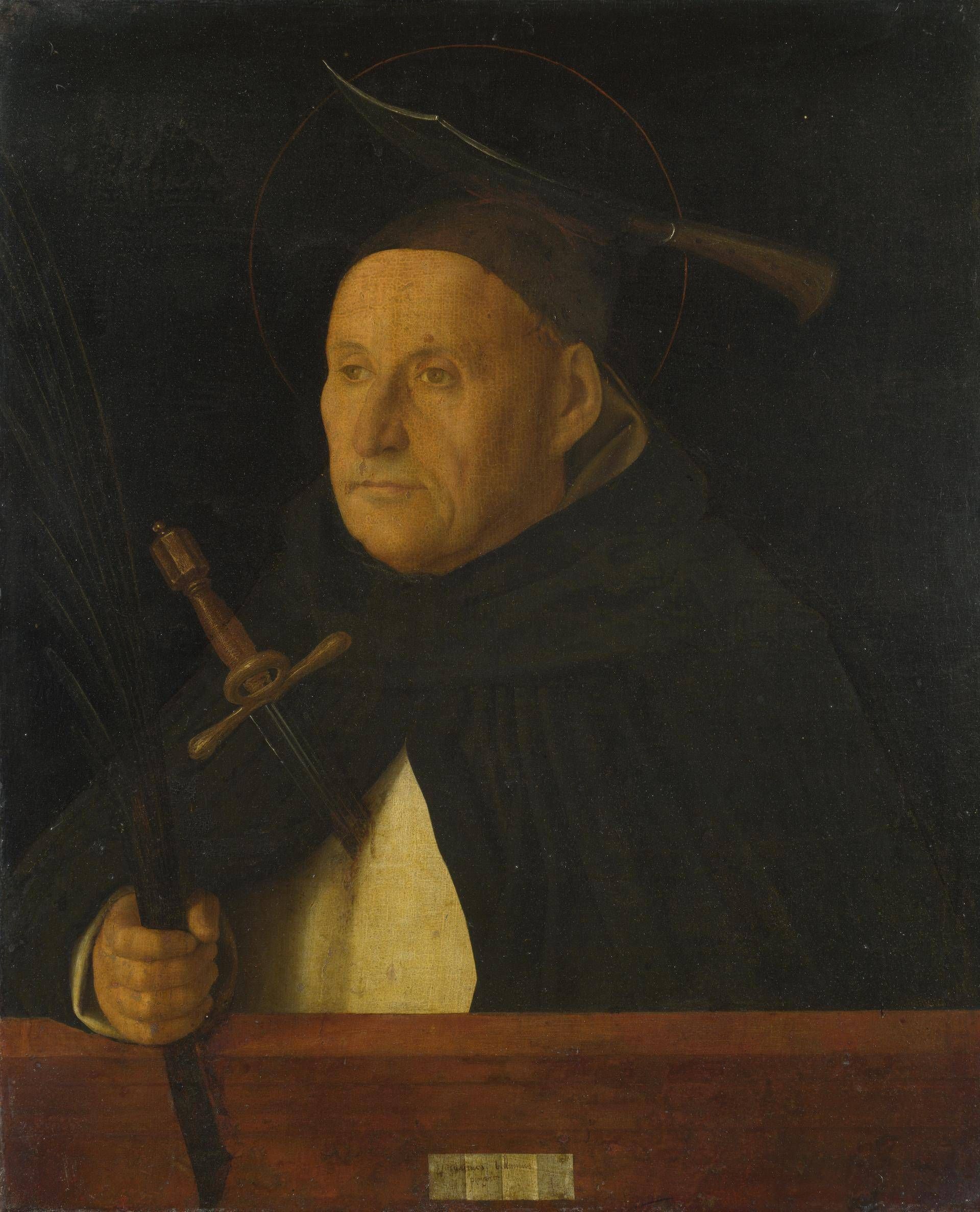
A Dominican, with the Attributes of Saint Peter Martyr
Saint Peter Martyr was a Dominican friar from Verona. He was assassinated in 1252: ambushed by a group of heretics as he travelled to Milan, he was stabbed in the heart and the head (Bellini depicted the moment of his murder in The Assassination of Peter Martyr).
This picture was once thought to be a 'portrait' of the saint. The man wears a black and white Dominican habit, and the unique identifying attributes that relate to the saint's murder are included: we can see the hilt of a dagger which has been plunged into his heart, and a cleaver lodged in his head. He also holds a palm branch, a symbol of martyrdom, which often features in depictions of saints who were killed for their faith.
But Bellini's original image was a simple portrait of a Dominican friar - X-ray imagery shows that the attributes were added over the original paint 100 years after the picture was made. Chemical analysis of the paint used for the dagger reveals that it contains lead tin-yellow, a pigment only introduced in Italy after 1600. The dagger itself was also unknown in the fifteenth century when Bellini made this picture; it very closely resembles a type of dagger fashionable in about 1580-1620. The X-ray imagery also reveals that the friar originally held a scroll in his right hand, rather than a palm; in fact, the way his hand is shown clasping the palm seems an unnatural way to hold a branch, and makes more sense if we imagine a tube-shaped roll of paper.
When this painting was purchased it was regarded as an important work by Giovanni Bellini. Over time this was doubted, and even the signature on the piece of paper - similar to that used in his portrait of Leonardo Loredan - was thought to be fake. Infrared reflectography shows the drawing beneath the paint surface, and that the signature was part of the original design: it was drawn on to the panel before painting began. It is difficult to see the picture's true quality as the painted surface is quite damaged. The underdrawing, however, shows a very delicate and detailed drawing of the friar's facial features, which matches Bellini's sophisticated technique towards the end of his career.
We do not know why the painting was altered and transformed into an image of the famous Dominican saint. He was very popular in Venice in the sixteenth century: Titian's image of his assassination painted in the late 1520s (and destroyed by fire in the nineteenth century) was considered one of his finest works. The image may have been altered in order to make it more appealing to a potential buyer.
Credit: Bought, 1870
c. 1490-1500
Oil on wood
59.1 x 48.3 cm
NG808
Image and text © The National Gallery, London, 2025
Where you'll find this

Permanent collection




